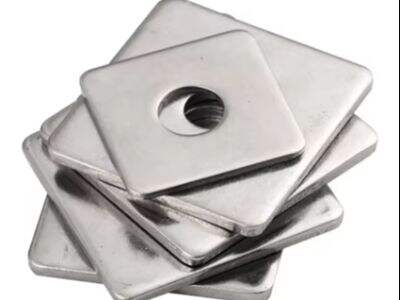בטון. בין החומרים האחרים, ניתן למצוא את החומר הנפוץ ביותר בשימוש – בטון. בטון הולאוד MADE מסمنت, אגרגטים ומים. לכן הוא כל כך חזק: כשכל החומרים הללו יבשים, הם יוצרים תערובת קשה מאוד שאינה נפגעת בקלות. בטון משמש כיסוס לבניינים, בניית קירות ורצפות. גם לבטון הולאוד יש חולשות שלו כי הוא עשוי להת澎 אם חם או להתקטן אם קר. לכן, חשוב להשתמש בחומר זה כדי למנוע בעיות אלו.
פלדה
הפלדה היא חומר חזק ומאוד נאמן שמשתמשים בו בצורה רחבה לבניית מסגרות בבתים, גשרים ובניטובים גדולים נוספים. אש, מים ומזיקים הם שלושת הבעיות הגדולות ביותר בחלק מהסביבה, והפלדה מהווה בחירה מצוינת במקום זה מכיוון שהיא סבורה לשלושת הגורמים האלה. אבל גם לפלדה יש כמה חסרונות. תהליך ייצור הפלדה יכול להפיק הרבה פליטת פחמן, מה שאינו ידידותי לסביבה, והוא גם עשוי להיות יקר מאוד.
Bricks
לבנים הן מאוד פופולריות חומר בנייה מתכתית ברזל מזווד/בר/לוח תומך עליון צורה וגודל: אלו מיוצרות מטיט או חומרים טבעיים אחרים ובאותן מגיעות בצורות וגדלים שונים. בדרך כלל אנו בונים קירות חסימה עם לבנים, או את הצינור עם לבנים. עמידות ושימור חום מצוין הם מאפיינים מסורתיים של לבנים. יש גם מספר חסרונות להתמודד איתם. לבנים אינן מתייחסות היטב לחמצוניות ויפרצו כאשר הן נהיות מדי לחות.
מדוע זה חשוב לדעת על החומרים שאתה עובד איתם
יש הרבה יתרונות במשחק כאשר בוחרים את החומר הבנייה המושלם לפרויקט שלך - יתרונות שיכולים להיות חשובים מאוד. הנה מספר סיבות משמעותיות להתחשב בהן:
ทนทาน: חומרים חזקים ועמידים עוזרים לבניין שלך להימשך זמן רב ודרושים תחזוקה פחות עם השנים.
יעילות אנרגטית: בחירת חומרים עם יכולות איסולציה גבוהות יכולה לתרום לשימור אנרגיה. וזה אומר שאתה יכול לחסוך על חשבוניך של אנרגיה, כי הבניין שלך יהיה חם יותר בחורף וקר יותר בקיץ.
אסתטיקה: חומרי בנייה אלו יכולים לגרום לבניין שלך להיראות יפה, מה שיכולה לשפר את הערך של הבניין שלך. הרבה אנשים מעדיפים לגור או לעבוד במקומות מושכים.
קיימustainability: חומרים ידידותיים לסביבה הם טובים יותר עבור הסביבה. זה עוזר לצמצם את פליטת הפחמן שלך וליצור עולם/מצב נקי יותר לילדים שלך.
תכונות חומריות של חומרי בנייה
מכיוון שכל חומר לבניין יש תכונות ייחודיות, הוא מתאים למשימות מסוימות ולא לאחרות. תכונות להתחשב בהן:
עוצמה: תכונה זו מגדירה עד כמה החומר מסוגל לעמוד בטענים חיצוניים ללא התפרקות או התפורמות. חומרים חזקים יכולים לתרום לבטיחות הבניין.
קשיחות: קשיחות היא מדד של נטיית החומר להתנגד לתפורמות תחת טען חיצוני. זה חשוב עבור ארכיטקטורת הבניין.
ทนทาน: ทนทาน מתייחסת ליכולת החומר לעמוד בזיהויים שנגרמים על ידי היזה יומיומית. חומרים יותר עמידים יוחלפו פחות פעמים.
חימום: חימום הוא ההתנגדות של החומר לצריבת חום או קול דרךו. הכמות הנכונה של חימום יכולה לעזור לשמור על הבניין בנוח וביעיל אנרגטית.
הגנה מפני מים: מאפיין זה מתאר את יכולת החומר למנוע חדירת מים. חומרים המרתיעים מים יכולים לעזור להגן על מבנים מזיקי.
איך לבחור חומרי בניין
לטפל במה כיסא ברון פלדה לבניין חומרים בנייה במשקל כבד 60~240 מ"מ לוח תומך ברון עם קצות להשתמש בפרויקט הוא החלטה שתלויה במספר גורמים. לשקול את התקציב שלך, את הרשות המקומית שלך והיעוד המתוכנן לבניין יעזור לך להחליט מה מתאים לך. הנה כמה שאלות שאולי יהיו מועילות להתחשב בהן לפני ההחלטה שלך:
מהו התקציב שלי? תן את הדעת על התקציב עבור החומרים.
איך האקלים באזור שלי? לדעת את האקלים יעזור לך לבחור את החומרים הנכונים.
מהו היעוד של הבניין? יהיה קל יותר לעשות בחירות אם תדע מה יתקיים בתוך הקירות.
איזה אסתטיקה אני רוצה להשיג? השך את הדעת על מה שאתה רוצה שהבניין ייראה כמו ויגע כמו.
בכמה בניין חסכוני אנרגטית אני רוצה לגור? חשב כמה אנרגיה אתה רוצה לחסוך עם ההחלטיות שלך.
השוואת חומרים שונים
כשמדובר בבחירת חומרים שונים לבנייה, זה יכול להיות מועיל להשוות את היתרונות והחסרונות. מבט על חלק מהחומר הפופולרי ביותר כובע ברזל פלסטי שício למכירה חמה כחומר בניין השוואת החומרים:
בטון: כן, הוא חזק, סובל מזג אוויר ובעיקר זול. חסרונות: עשוי להצטער עם הזמן, והייצור שלו גורר א足טפרינט פחמן גדול.
Wood Pros: מקור תynamodbble, מסתכל טוב ובדרך כלל יקר. Cons: Could disintegrate over time and is not fire-resistant
פלדה: יתרונות: חוסן עצום, עמידה ומחוסנת בפני נגיפים ומזג אוויר רע. היפוך של זה הוא: יתרונות: יקר מאוד אַפּרינט פחמן גבוה — חסרונות: יכול לרקות ללא הגנה
/components/head/pics/ico-email.png)









































/components/head/pics/down.png)
/images/share.png)

/components/foot/pics/gotop-email.png)
/components/foot/pics/gotop.png)